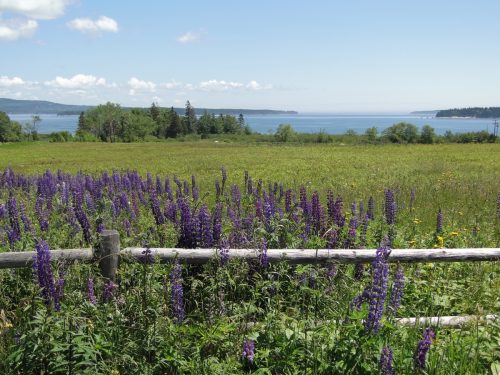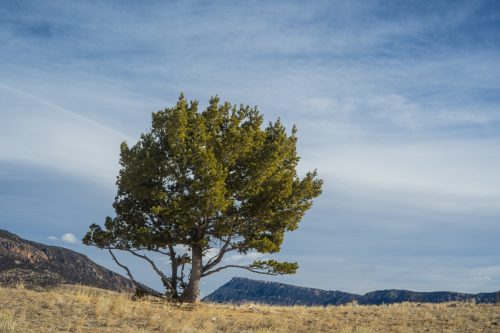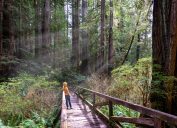This Popular U.S. National Park Is Being Threatened by Dangerous Invasive Species
The NPS is working to control the situation, but there's another factor making it worse.

With over 400 to choose from, U.S. national parks are the ideal vacation destination for travelers across the country, whether they're nature lovers, explorers, or wildlife fans. But the National Park Service (NPS) wasn't just established for our personal enjoyment: It has a stated mission to preserve and protect these parks for future generations. That means actively maintaining national parks and working hard to repair any damage. Some things, however, are out of the NPS' control—including dangerous invasive species. Read on to find out which U.S. national park is currently under siege.
READ THIS NEXT: Yosemite National Park Officials Say If You Hear This, "Quickly Get Away From the Area."
Invasive species threaten the wildlife around them.

Invasive species are aptly named, as they effectively invade and infiltrate an ecosystem. According to the U.S. Department of Agriculture (USDA) Forest Service, to be classified as invasive, species must be non-native to the area and "likely to cause harm to the economy, environment or human health." The organisms threaten surrounding wildlife by monopolizing resources, essentially crowding out native species. In addition, they often lack predators in the area, allowing them to spread without restraint. In areas like national parks, where wildlife is meant to be protected, these invasive species are that much more concerning.
Now, biologists at one national park in the Northeast are working to combat dangerous invasives, but their job is becoming more difficult.
Invasives aren't a new addition to this national park.

Nationwide, approximately 2.6 million acres of park lands are "affected by invasive plant species," according to the NPS. At Acadia National Park in Maine, it's estimated that almost one-third of the park's plant species are non-native, and roughly 25 are "highly invasive."
Purple loosestrife (Lyhtrum salicaria), which is found in Acadia's wetlands, has been effectively monitored since 1988, and the Invasive Plant Management Team (IPMT) at Acadia works to track and remove invasive species every year. In addition to purple loosestrife, shrubs such as glossy buckthorn (Rhamnus frangula), Japanese barberry (Berberis thunbergii), and Morrow's honeysuckle (Lonicera morrowii) are especially "problematic," as are vines like Asiatic bittersweet (Celastrus orbiculatus), and herbaceous plants like Japanese knotweed (Fallopia japonica).
It isn't a simple task to keep these plants under control and protect native species. And biologists' work is further complicated because "climate change is exacerbating the issue," Jesse Wheeler, vegetation biologist for Acadia, told NBC-affiliate News Center Maine.
RELATED: For more up-to-date information, sign up for our daily newsletter.
Acadia is staying ahead of the issue.

Wheeler explained that when warming temperatures extend into the fall in the Northeast, it allows invasive species to spread even farther. They are able to grow at a quicker rate in the spring, and extend their "growing seasons" through autumn, he told News Center Maine. On the other hand, these temperatures "stress" native species, which have adapted to climate conditions at Acadia over millennia. Wheeler also manages several "sleeper species" that are now becoming more invasive with warmer temperatures, despite the fact that they've been recorded in the area for over a century.
Acadia is fortunate in that it has a limited number of invasive species to keep under control, but Wheeler anticipates the Northeast region will become a "hotspot" for invasives as the planet warms. Thankfully, experts at Acadia are being proactive in managing the park's wetlands, islands, and forests.
"We're on sort of the leading front of both where species are coming toward, so we're sort of in that northern range of a lot of the invasive species, but we also have active management going on," Wheeler told News Center Maine. "I think that is sort of a ray of hope for us that we can kind of stay in front of some of these as we also anticipate more challenges coming as the climate warms."
National parks across the country are threatened by climate change and invasive species.

Rising temperatures are not limited to the northeast region of the U.S., and scientists stress that the climate crisis can have serious ramifications when it comes to our geography.
As a low-elevation park, climate change threatens coastal features at Acadia, like Thunder Hole along its rocky shoreline, according to Charles van Rees, PhD, conservation scientist, naturalist, and founder of the Gulo in Nature blog. Other national parks are also facing changes, including one of the most popular—Yellowstone National Park. Just this summer, extreme temperatures led to a massive flood that permanently changed the park, while warming temperatures in the West foster a friendlier environment for invasive species.
This is "allowing harmful invasive species to spread further up in elevation, killing off beautiful and important trees like whitebark and lodgepole pines," van Rees previously told Best Life, adding that Glacier National Park and Rocky Mountain National Park are affected by warming at higher elevations as well.





















